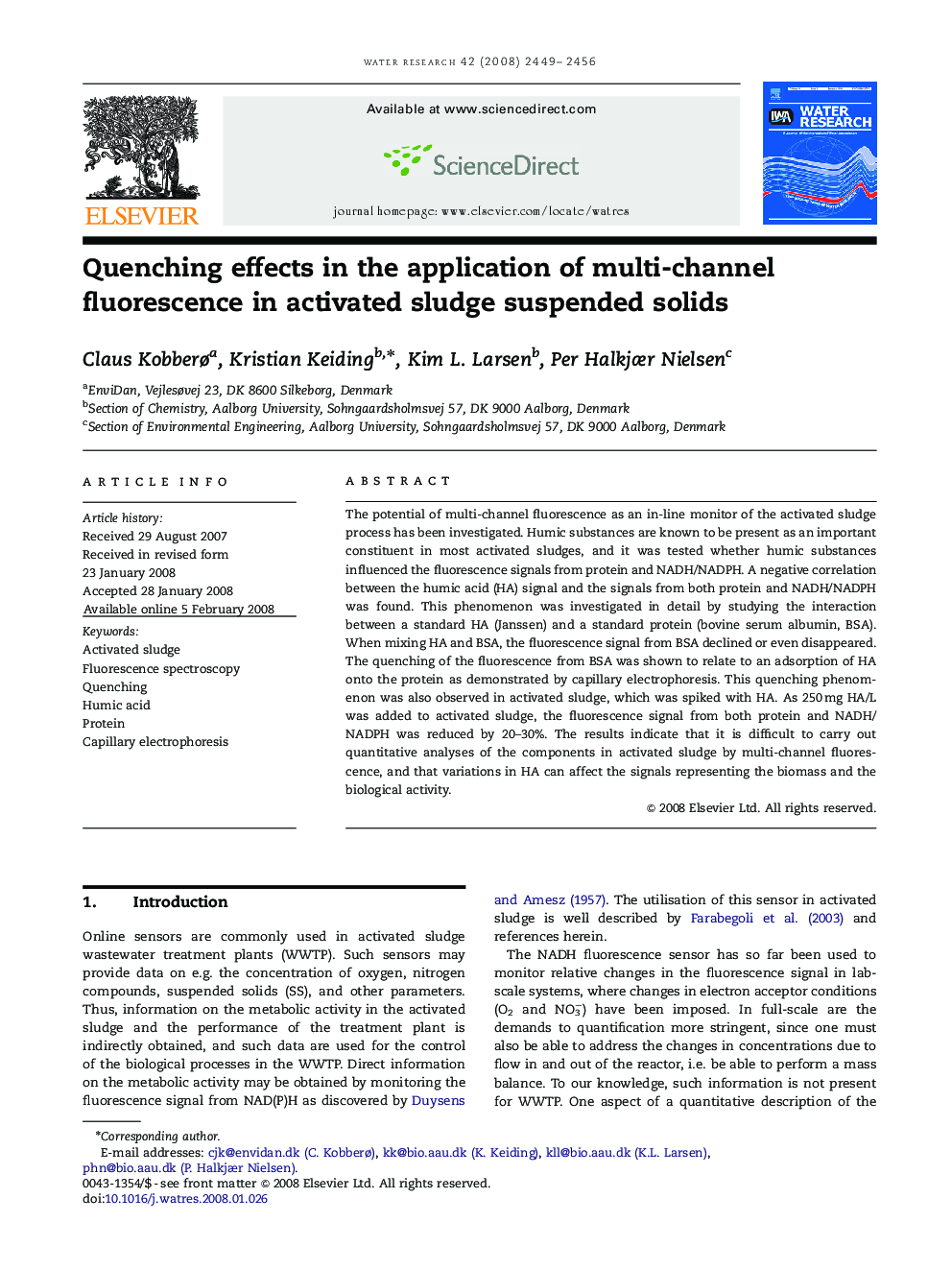| Article ID | Journal | Published Year | Pages | File Type |
|---|---|---|---|---|
| 4484755 | Water Research | 2008 | 8 Pages |
The potential of multi-channel fluorescence as an in-line monitor of the activated sludge process has been investigated. Humic substances are known to be present as an important constituent in most activated sludges, and it was tested whether humic substances influenced the fluorescence signals from protein and NADH/NADPH. A negative correlation between the humic acid (HA) signal and the signals from both protein and NADH/NADPH was found. This phenomenon was investigated in detail by studying the interaction between a standard HA (Janssen) and a standard protein (bovine serum albumin, BSA). When mixing HA and BSA, the fluorescence signal from BSA declined or even disappeared. The quenching of the fluorescence from BSA was shown to relate to an adsorption of HA onto the protein as demonstrated by capillary electrophoresis. This quenching phenomenon was also observed in activated sludge, which was spiked with HA. As 250 mg HA/L was added to activated sludge, the fluorescence signal from both protein and NADH/NADPH was reduced by 20–30%. The results indicate that it is difficult to carry out quantitative analyses of the components in activated sludge by multi-channel fluorescence, and that variations in HA can affect the signals representing the biomass and the biological activity.
